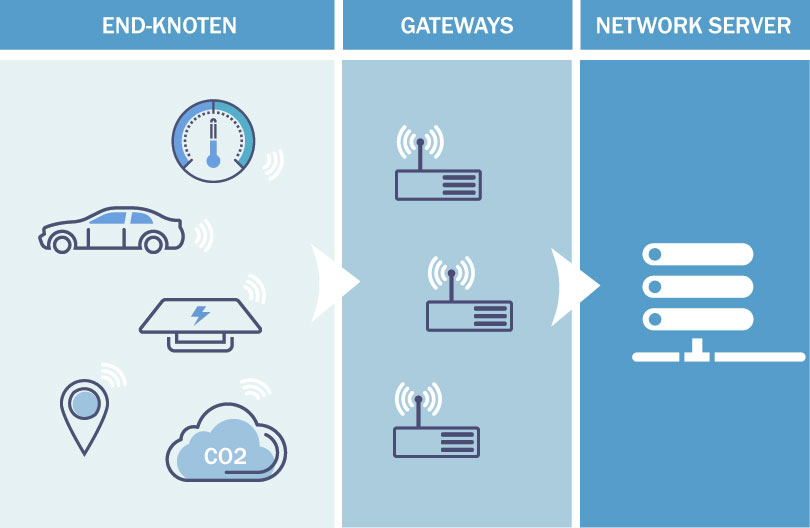A LoRa (for long range) network contains the following components:
- End node (e.g., a sensor)
- Gateways
- Network Server
These form the minimal infrastructure to successfully use LoRa end nodes and evaluate them in a platform such as AWS IoT Core, Google IoT or RevoConnect.
With a suitable use case, a LoRa net has the following advantages:
- 868 MHZ free frequency band in Europe (no costs associated)
- Low power consumption from end node i.e. long battery life
- Good range of 3-15 km (depending on building density or direct line of sight)
The LoRa standard repeatedly competes with the Narrowband Internet of Things (NB-IoT) standard. This doesn’t have to be the case, because both are designed for different applications. The use case and the goal of the LoRa network should be well defined. You have to start with an analysis of the target in order to derive the necessary components. With the use case (e.g., moisture measurement in urban areas, snow load profiles in remote areas, filling levels of decentralized plants) established, you can develop the basic structure of the LoRa network.
With the Objective in Mind, Many Open Questions can then be Answered:
- What’s the necessary range of LoRa nodes?
- What’s relevant for the network parameters (e.g., SF, bandwith, CR, payload)?
- Which LoRa network server makes sense (light LoRa server or enterprise server)?
- What problems might occur?
- Destination of the LoRa end node
- Many nodes in a dense network or few nodes spread out over a wide area
- How often should the end nodes report (data volume)?
- Which hardware for the end node (make or buy decision)?
- How much does it cost to operate the infrastructure (hardware, servers and licenses)?
- Where in the network topology are network servers and application servers located?
- How is the data transferred to the platform (MQTT, RestAPI or programmatic interface)?
- Do you have the required skillset in-house?
The next steps are a project handbook with the specific project brief and a concept. The implementation will be explained in a future article.



